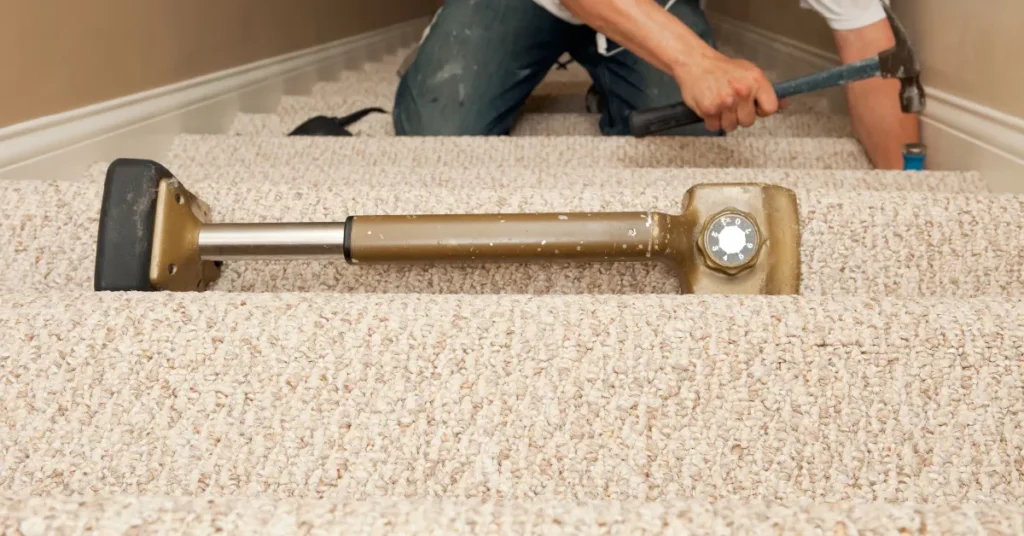Installing new carpet is one of the most effective ways to refresh and upgrade your space, but proper preparation is key to ensuring a smooth and successful installation process. Whether you’re scheduling residential carpet installation or planning a large commercial carpet installation, knowing how to get your home or business ready will save you time, money, and headaches. One common question many homeowners have is, “how long does it take to install carpet?” The time required for carpet installation depends on multiple factors, including the total square footage of the area, the specific type of carpet being installed (such as plush, Berber, or sisal), and the condition and readiness of the subfloor and surrounding space. In general, preparation is just as important as the installation itself—so let’s walk through everything you need to do before your installers arrive.
1. Understand the Timeline: How Long Does It Take to Install Carpet?
Before diving into the prep work, it’s helpful to know the average installation timeline. On average, a professional crew can install carpet in a standard-sized room (about 12×15 feet) in under a day. However, larger projects or more complex flooring—such as sisal installations or jobs requiring carpet binding services—may take longer.
Once again, the question arises: how long does it take to install carpet?
- Small Room (bedroom/office): 2–4 hours
- Medium to Large Rooms (living rooms, basements): 5–8 hours
- Entire Home: 1–2 days
- Commercial Carpet Installation Projects: Depends on square footage but may take several days, especially if done in phases.
2. Clear the Space Thoroughly
Preparing for carpet installation begins with clearing the room; be sure to remove all furnishings, wall hangings, and personal items so installers can work without interruption. That includes sofas, tables, beds, dressers, and even wall art or electronics.
Some companies offer furniture removal services as part of their package, but handling this yourself can save on costs. Be sure to check with your carpet binding services or flooring contractor about their policy.
3. Remove the Old Flooring (If Required)
If you’re replacing existing carpet or another type of flooring, find out whether removal is included in your quote. Many residential carpet installation services include this, but not always.
- For old carpets: Pull up the edges and roll up the old carpet. Be cautious with tack strips and staples.
- For hardwood or tile: These require more work and may impact how long it takes to install carpet, especially if leveling or repairs are needed.
4. Check and Prep the Subfloor
Carpet installs best on a smooth, dry, and even subfloor.
Take time to:
- Vacuum and clean any debris, dust, or residue
- Inspect for moisture (especially in basements)
- Repair squeaks or loose boards
- Ensure the surface is smooth and free of nails or staples
If your installers discover an uneven subfloor, they may need to delay the job for repairs, increasing how long it takes to install carpet in your home.
5. Take Care of Doors and Baseboards
When new carpet is installed, it often changes the floor height slightly. This means doors might not swing freely afterward.
Here’s what you can do:
- Remove doors before installation day
- Be prepared to have them trimmed or adjusted afterward
- If you’re doing commercial carpet installation, make sure doors to offices or conference rooms can be refitted
Baseboards may also need touch-ups or removal depending on how your carpet is installed.
6. Secure Pets and Children
On installation day, keep pets and children away from the work area for safety. Carpet installation involves tools, adhesives, and lots of movement—distractions can lead to delays or even accidents.
If you’re a pet owner, keep in mind:
- Loud equipment may stress animals
- Open doors during the process increase the risk of escape
Create a safe, separate space for them away from the work zone.
7. Ensure Accessibility and Parking
Your installers will need easy access to the home, especially if they’re carrying large rolls of carpet or equipment. Ensuring clear entry points and convenient parking can help avoid delays and reduce how long does it take to install carpet, making the process more efficient.
Do the following:
- Clear driveways or paths
- Inform building managers if you’re in an apartment or office
- Provide elevator access if necessary
- Confirm parking availability
Making things convenient helps speed up the job and can influence how long it takes to install carpet overall.
8. Review Carpet Type and Layout Plan
If you’re installing specialty materials—like sisal installations or requesting carpet binding services for stair runners or custom rugs—go over all details ahead of time.
Ask your installer about:
- Seaming plans (for large rooms)
- Carpet direction
- Padding type
- Transition strips between flooring types

9. Prepare for Cleanup
Although most reputable installers will clean up after themselves, it’s wise to have a plan in place:
- Have a vacuum handy to get rid of stray fibers
- Either keep extra carpet for future use or ensure proper disposal.
- Be ready to do light dusting afterward
10. Plan Post-Installation Activities
Once installation is complete, here’s what to do next:
- Wait before walking: Give the adhesive time to set (usually a few hours)
- Ventilate the space: Open windows to release any odors from adhesives or new materials
- Adjust doors and furniture: Be careful when placing heavy items back—dragging can damage your new carpet
Final Thoughts
Getting your home or office ready for carpet installation doesn’t have to be overwhelming. With the right preparation, you’ll save time and avoid stress on installation day. Taking the time to properly prepare can also help reduce delays and impact how long does it take to install carpet, especially when dealing with tight schedules. Whether you’re doing residential carpet installation in a single room or a complete commercial carpet installation, these steps will ensure your space is ready and your carpet lasts for years.